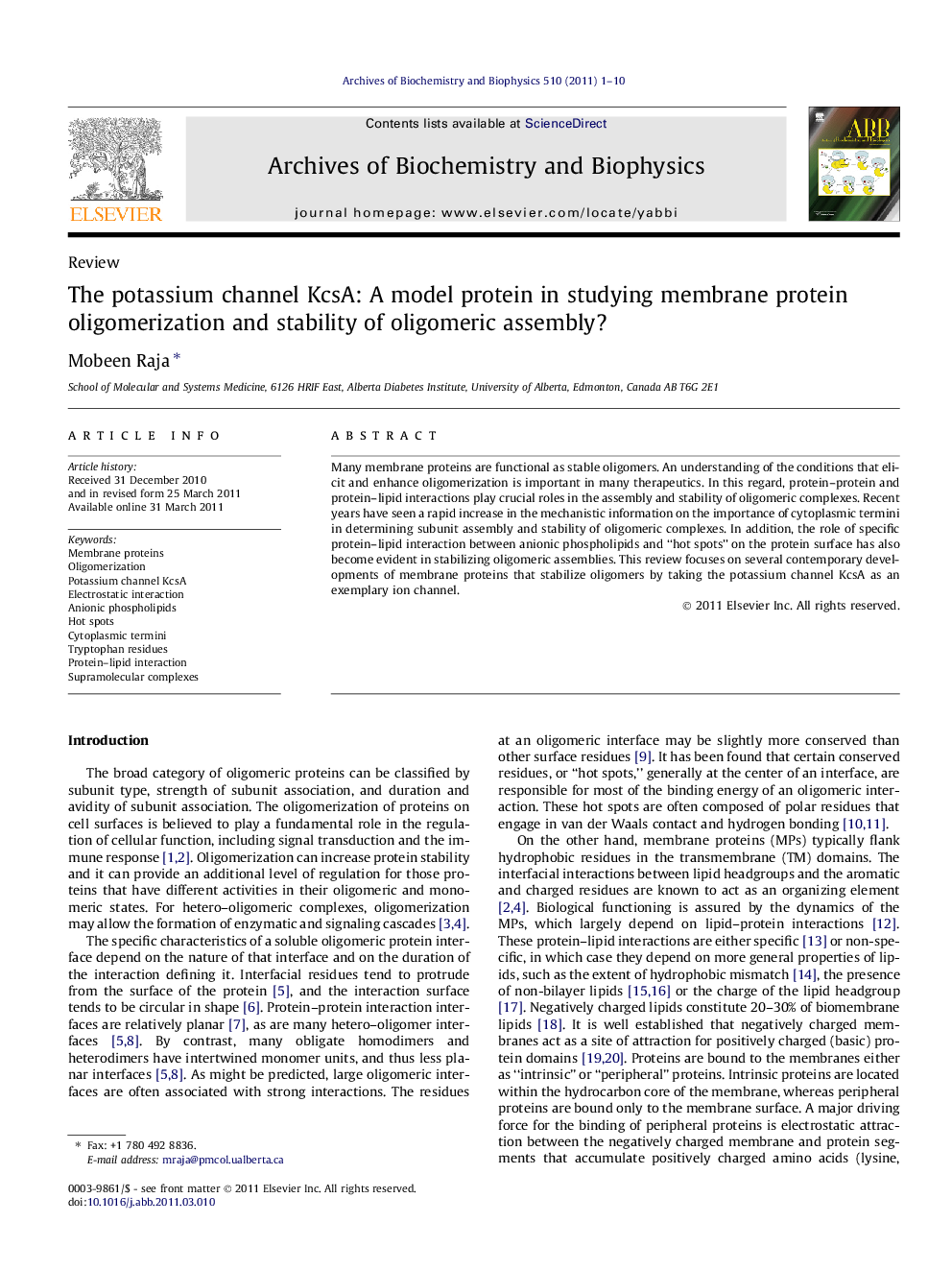| Article ID | Journal | Published Year | Pages | File Type |
|---|---|---|---|---|
| 1925740 | Archives of Biochemistry and Biophysics | 2011 | 10 Pages |
Many membrane proteins are functional as stable oligomers. An understanding of the conditions that elicit and enhance oligomerization is important in many therapeutics. In this regard, protein–protein and protein–lipid interactions play crucial roles in the assembly and stability of oligomeric complexes. Recent years have seen a rapid increase in the mechanistic information on the importance of cytoplasmic termini in determining subunit assembly and stability of oligomeric complexes. In addition, the role of specific protein–lipid interaction between anionic phospholipids and “hot spots” on the protein surface has also become evident in stabilizing oligomeric assemblies. This review focuses on several contemporary developments of membrane proteins that stabilize oligomers by taking the potassium channel KcsA as an exemplary ion channel.
► The KcsA K+ channel acts as a representative ion channel in understanding membrane protein oligomerization. ► Anionic phospholipids have unique roles in membrane protein assembly, folding and stability. ► The anchoring tryptophans help stabilize oligomeric assemblies. ► Cytoplasmic termini contribute to oligomeric assembly and stability. ► Like many membrane proteins KcsA contains ’hot spot’ residues that control protein–protein/lipid interaction.
